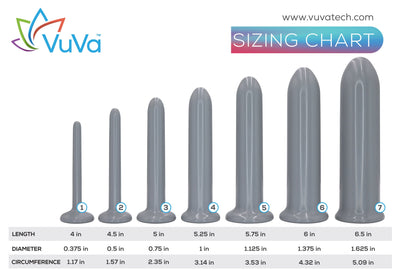
| Tara Langdale
Pain Down Below: 4 Less-Known Causes and Treatments for Pelvic Pain
Pain down below is something that most women will endure at some point over the course of their lifetime. Perhaps you’re one of the women who are wondering, is it normal to have pain down there?
We would have to say that although common, pains in the pelvic area and backside should not be considered ‘normal’. They indicate an underlying issue to be resolved, and sometimes ignoring pelvic pain can lead to more tenacious problems later. Pain in the nether regions is often worrying, and the cause may not always be easy to pinpoint. So, if you are feeling pain in the pelvis, rectum or buttocks, what should you do?
This article will answer the important questions some of the less-known causes of pelvic pain. We have written much on vaginal pain conditions, which you can research through our article library. For pain in the nether regions that you can’t quite pinpoint, we are happy to give you some insights into possible reasons for that pain down below and what you can do about it.
How do you get rid of pain down below?
This depends on the underlying reason for pain in your pelvic area. First it would be prudent to establish a few details, such as: what is the location of your pelvic pain? If you see a healthcare provider, they will first want to establish exactly where your pain is coming from. With issues like pelvic nerve pain, your issue could be radiating pain outwards, making it more difficult for you to pinpoint. It is always a good idea to see your physician, because they may need to refer you to a pelvic pain specialist.
Read on for insights into some of the less-known causes of pelvic pain in women. Perhaps one of these surprising complications is causing your pain down below…
What causes pelvic pain in females?
Below are some reasons for pain down below that you might not have heard of. Still, some of them are actually quite common.
-
Proctalgia
Characterized by shooting pains up the bottom and lower abdomen, proctalgia fugax is classified as anal pain with no specific cause. Proctalgia pain comes from intense muscle spasms in or around the anal canal, and it can be pretty severe. It can happen to anyone, but usually not before they start puberty. Proctalgia is more common in women than men, as published in a review done in 2017.
You may experience severe pain down below if the pelvic floor muscles, anal sphincter or rectum begin to spasm. It can cause a stabbing pain, which some report as “feeling like a knife is sticking into my rectum”. Often the pain comes on strong without warning, but duration may vary.
How do you get rid of proctalgia pain?
When pain down below doesn’t have a known cause, it’s often a case of management. Treatment of proctalgia fugax includes:
- Deep breathing and other forms of relaxation
- Pain medication
- Warm baths
- Sitz baths
- Prescription ointments (such as glyceryl trinitrate or topical diltiazem)
Proctalgia shouldn’t be mistaken for anal fissures, which also cause sharp pains in the rectum. These are due to tears in the rectum when defecating and will only be experienced when going to the toilet. It’s likely that fissures will lead to bleeding (fresh, bright red blood).
-
Pudendal neuralgia
Can you have nerve pain in your pelvic area? You certainly can, and like most kinds of nerve pain, it is sudden, sharp and anxiety-inducing… but what causes nerve pain down below? One of the most common causes of pelvic nerve pain is pudendal neuralgia. In women, reasons for pudendal nerve entrapment might be:
- Surgical injury
- Scar tissue from surgery
- Pelvic trauma
- Childbirth
- Pelvic or perineal injury or trauma
- Straining due to constipation
- Poor posture
- Too much exercise (e.g. cycling or horse riding)
- Stress
- Viral infection
- Immunologic processes
How do you know if you have pudendal neuralgia? Your pudendal nerve starts at your lower back, runs along your pelvic floor muscles and terminates in your perineum. Pain in these areas (and when you’re having sex) may indicate pudendal neuralgia.
This nerve can get entrapped when pelvic floor muscles spasm - specifically the levator ani or obturator internus muscles. It can also occur due to pressure from the surrounding sacrospinous or sacrotuberous ligaments. If you have pudendal neuralgia, you most likely have muscle spasm and muscle shortening throughout your pelvic girdle.
How do you treat pudendal neuralgia?
Women often reach out to an osteopath for this type of pain down below. Physician and pudendal nerve expert Dr Gilles Mondoloni says that osteopaths are able to relax many muscles of the pelvis and perineum that can trap the pudendal nerve. They may free trapped joints of the lower back, sacrum and the hinge between the sacrum and coccyx. They knead the tissues surrounding the pudendal nerve to encourage flexibility and less adherence to the nerve.
An osteopath will release muscle spasms and correct imbalances and tissue restriction. They typically use techniques such as palpation and manual manipulation to stretch and lengthen affected muscles, and to correct posture and range of motion. They will determine the strength of your pelvis, back, and hips, and give you exercises, stretches, and helpful information on the subject.
They may use myofascial release techniques, trigger point therapy and encourage mobilization of the connective tissues. Pelvic floor physical therapists use similar strategies, so you may wish to consult yours if you have one.
-
Pain in the pelvic floor
Chronically tight muscles are called ‘hypertonic’, and various muscles can be affected. The pelvic floor is trickier to deal with as you can’t easily reach it, or pinpoint where pain is coming from in this area.
The pelvic floor is a group of muscles that resembles a hammock. It connects the lower part of the pelvis and sacrum, and in women supports the bladder, rectum and womb too. It wraps around the vagina, urethra and rectum, and when it constricts, it can lead to pain and various forms of dysfunction.
Pain down below due to a hypertonic pelvic floor often looks like this:
- Pelvic Muscle spasms and contractions
- Urinary urgency, pain when urinating or difficulty in starting and/or maintaining flow of urine
- Feelings of urgency to pass stools, or pain when passing, straining and constipation
- Pain in the lower back, genitals, rectum or hips
- Painful sex
- Pain during gynecological examinations
- Tightness in the hips, glutes, lower back, groin and abdomen
How do you relax a tight pelvic floor?
The best treatments for a hypertonic pelvic floor are pelvic floor stretches and vaginal dilators (to stretch out tight vaginal muscles). Depending on the severity of your muscle tightness, it may be necessary for a therapist to do some manual manipulation, trigger point therapy, myofascial release or biofeedback techniques. Pelvic floor physical therapists are the experts on releasing pelvic floor muscles, and they usually recommend using vaginal dilators and doing pelvic floor stretches as ‘homework’ too.
-
Piriformis syndrome
Another type of pain down below is pain in the buttocks. A pear-shaped muscle called the piriformis is found deep within the buttocks. This muscle controls various functions of the hips and pelvis, and it sits close to the sciatic nerve. When it tightens, it can irritate the sciatic nerve, leading to pains down the leg – some of which can be excruciating and severely debilitating.
Piriformis syndrome can occur due to an imbalance in the muscle groups, because one muscles has become weak and forces another to work harder.
How do you treat buttock pain from piriformis syndrome?
This type of pain down below may be diagnosed by a physiotherapist, who can differentiate between this and lower back issues. They will check for the underlying cause of your piriformis dysfunction and use manual manipulation techniques to alleviate symptoms. Your physiotherapist may also give you exercises that stretch the piriformis, or strengthen the dysfunctional muscles that are forcing the other muscles in the group to work overtime.
We hope this article has shone a light on your pain down below and given you a starting point in your healing journey. If not, we have plenty of information on other pelvic pain conditions in our blog, so it may be time for some education, which is always the first step to freedom from pain. Good luck!
Resources
Vuvatech.com/blogs/vuvagirlblog/pudendal-neuralgia-symptoms-and-causes
Webmd.com/pain-management/guide/piriformis-syndrome-causes-symptoms-treatments
Vuvatech.com/blogs/vuvagirlblog/what-is-pelvic-floor-physical-therapy-by-dr-peterson
Vuvatech.com/pages/pelvic-pain-resource-guide
If you’d like to know more, you can read about using vaginal dilators for vulvar pain here, as well as some success stories to give you confidence and help you see the light at the end of the tunnel. What’s more, our extensive blog covers all vulvar pain conditions in great detail, so take a look around! If you don’t find what you’re looking for, get in touch as we’ll be happy to help.
VuVa Helpful Links:
How do Neodymium Vaginal Dilators work?
7 Reasons for a Tight Vagina and How to Loosen
How to Relax Vaginal Muscles, Vaginismus & Sex
Vaginal Stretching - Keeping in Shape with Dilators
Do Dilators Really Work? Yes, and They can Improve Your Sex Life!
Shop for VuVa Vaginal Dilators














